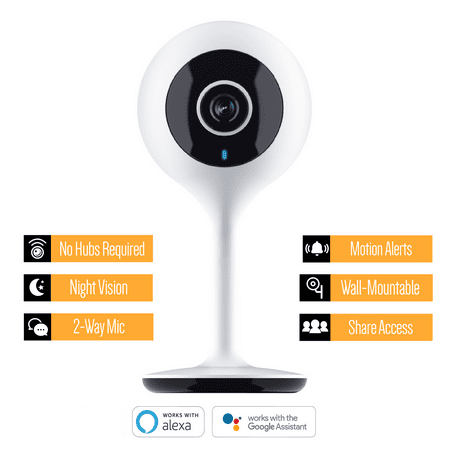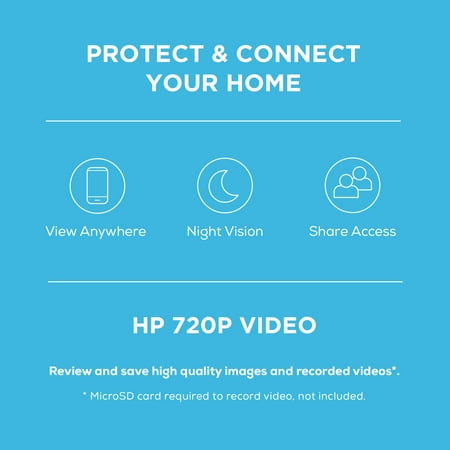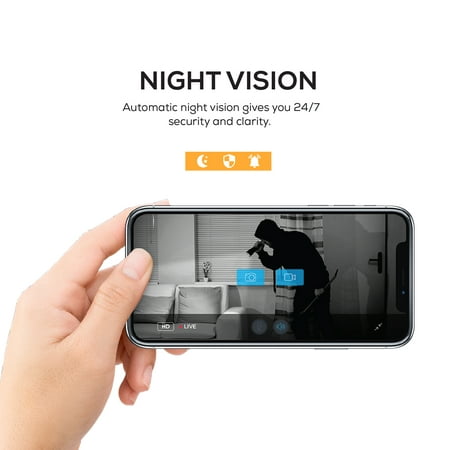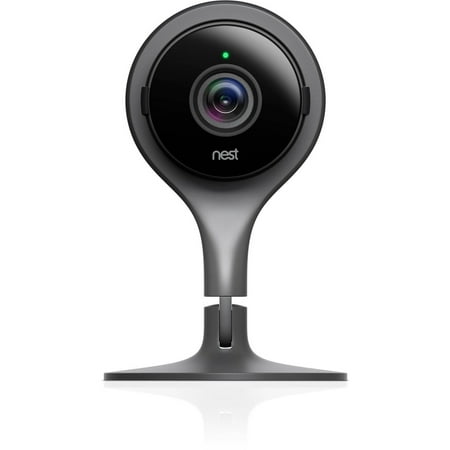Merkury Innovations Smart WiFi 720P Camera with Voice Control, Requires 2.4GHz WiFi, White
Check in at home from everywhere within the global with the Merkury Innovations Smart Wi-Fi 720P Camera. Installation is straightforward: Power on the digicam, download the Geeni clever domestic app, and follow the smooth step-by-step connection commands. These little cameras make a massive difference in home security. Place them anywhere or stick them to most walls and ceilings for the appropriate vantage point. Our cameras screen your private home 24/7 and ship notifications to your smartphone right away while movement is detected. 2-manner communique lets you listen and reply to family contributors and guests. Compatible with any standard micro SD card for storing and reviewing footage. No hubs required and it works with your already present 2.4 GHz Wi-Fi community.









Merkury Innovations Smart Wi-Fi 720p CameraNo hub required, Wi-Fi is constructed in24/7 live video streaming: see your own home for your smartphone in 720p HD and manipulate imaginative and prescient from anywhere Alerts to your telephone: get movement signals so you understand if anything happens Night vision accomplished proper: see the whole room at nightTalk and concentrate: listen the baby or speak lower back to get someone’s attentionFlexible stem to bend and mount at any angleTurn signals on and off by means of voice with Amazon Alexa, your Google Assistant & Microsoft Cortana Includes Security Camera,Mounting Adhesive, USB Cable, Power Adapter





Reviews
There are no reviews yet.